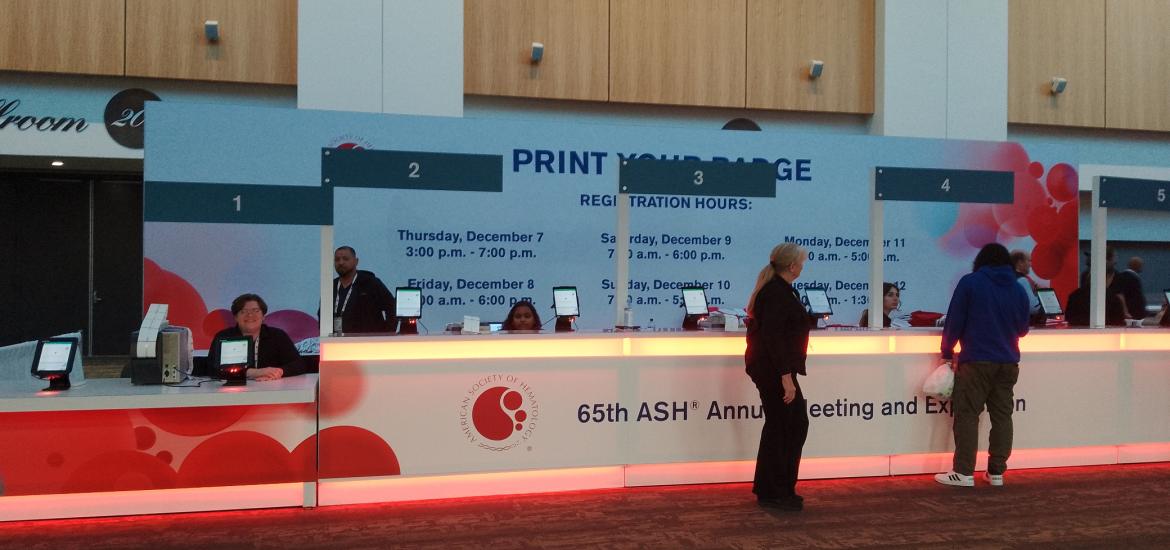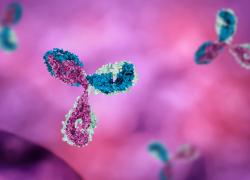
ASH 2023 – the markets forgive MorphoSys
Competitors struggle, while MorphoSys investors see a path forward for pelabresib after all.
Competitors struggle, while MorphoSys investors see a path forward for pelabresib after all.

Though yesterday’s ASH presentation of MorphoSys’s Manifest-2 data didn’t meaningfully change the narrative about this study, the company’s stock surged 25% today, suggesting renewed enthusiasm about the chances of approval for its subject, the BET inhibitor pelabresib.
In fact MorphoSys stock has now more than recovered its losses from when Manifest-2 read out in November, when the data were largely perceived as negative. Part of this will be down to general bullishness about pelabresib – perhaps the company has done enough to persuade the regulators – but an unmistakable fact is that competitor data look even worse.
The setting in question, first-line myelofibrosis, at ASH featured not only the Manifest-2 trial, giving pelabresib on top of Jakafi, but also the Transform-1 study, where AbbVie’s Bcl-2/Bcl-XL inhibitor navitoclax was combined with the Incyte drug. The two trials show that if spleen volume reduction is an easy win in this setting, then demonstrating an effect on symptoms is anything but.
Utter failure
Sunday at ASH saw the full extent of navitoclax’s failure in Transform-1, where despite reasonable efficacy on SVR35, a measure of spleen volume reduction, versus Jakafi alone, the navitoclax/Jakafi combo failed utterly on TSS, a measure of symptom improvement without which FDA approval seems unlikely.
The trial’s lead investigator, MD Anderson’s Dr Naveen Pemmaraju, said TSS was numerically worse for the navitoclax combo versus Jakafi. This held true whether looking at absolute TSS reductions from baseline at week 24, percentage of patients achieving TSS10, or those with TSS50.
The last metric yielded a value of 39% for the combo and 42% for Jakafi, allowing a handy cross-trial comparison against Jakafi’s registrational Comfort-1 study. Here Jakafi scored a TSS50 reduction of 46%, confirming that the Transform-1 failure wasn’t down to outperformance of Jakafi control.
In Manifest-2 pelabresib plus Jakafi similarly succeeded on SVR35 but failed on TSS50. What appears to have won the day is MorphoSys claiming in subgroup analyses to have seen signals of efficacy in terms of absolute TSS change, and in TSS50 in an intermediate-risk patient subgroup.
Asked during an ASH press briefing, Pemmaraju confirmed that in Transform-1 Jakafi performed as expected. Meanwhile, subgroup analyses, which might tease out some hint of a benefit for navitoclax in Transform-1, are still ongoing.
TSS data in Transform-1
Clearly whether either of the datasets is approvable will be down to the regulators, though notably MorphoSys plans a near-term filing while AbbVie is still biding its time. And, while these two projects represent two approaches in first-line myelofibrosis, they are not the only ones, though they are among the most advanced.
Bristol Myers Squibb, for instance, boasts its own BET inhibitor, BMS-986158, which at ASH yielded data from an early uncontrolled trial, one of whose cohorts was a first-line Jakafi combo. Here 24-week SVR35 of 75% was seen among 12 subjects, broadly in line with Manifest-2 and Transform-1. TSS data will only be reported once the study enters dose expansion.
However, two SVR50 responses came with a BMS-986158 dose that has been abandoned owing to grade 4 thrombocytopenia, so an obvious future question is whether a therapeutic window exists. Also in first-line disease Karyopharm reported Xpovio plus Jakafi data showing a 58% rate of 24-week TSS50, but its shares fell 10% today as 43% and 29% respective rates of severe anaemia and thrombocytopenia marred the data.
Incyte itself is clearly motivated to defend Jakafi’s position, and is developing the in-house BET inhibitor INCB057643. However, the study it presented at ASH today, Limber-103, is in the post-Jakafi setting, and includes related conditions, making it hard to compare at present.
Perhaps its most salient point was that INCB057643 hit dose-limiting thrombocytopenia at 6mg daily when combined with Jakafi, raising similar questions about a therapeutic window.
2035













